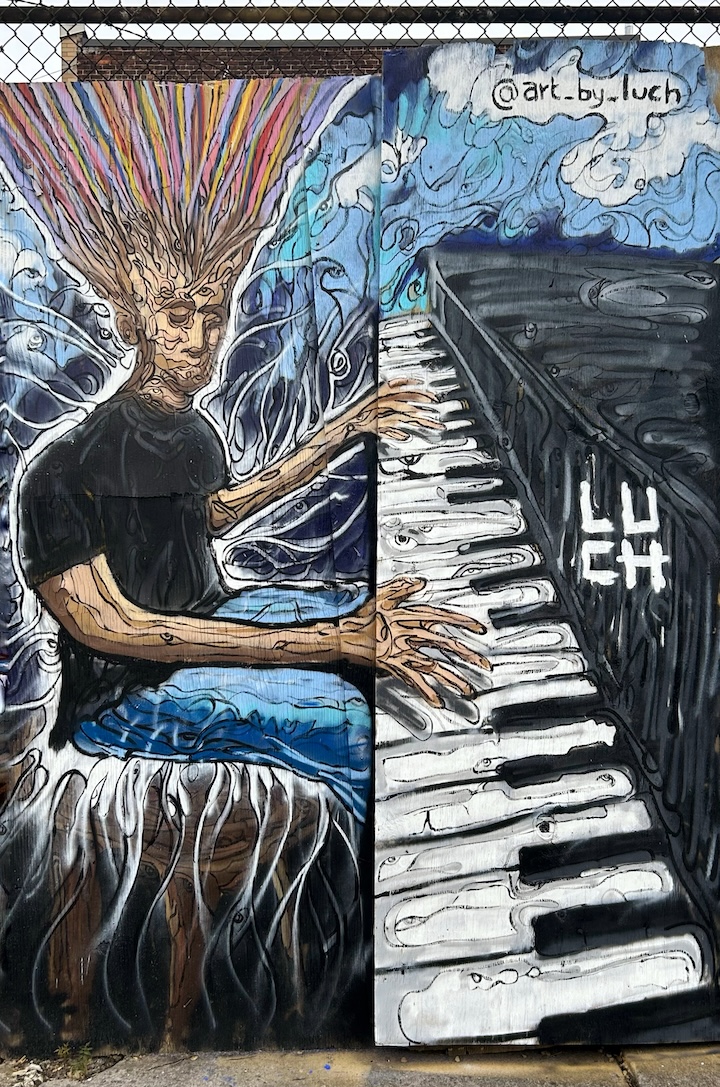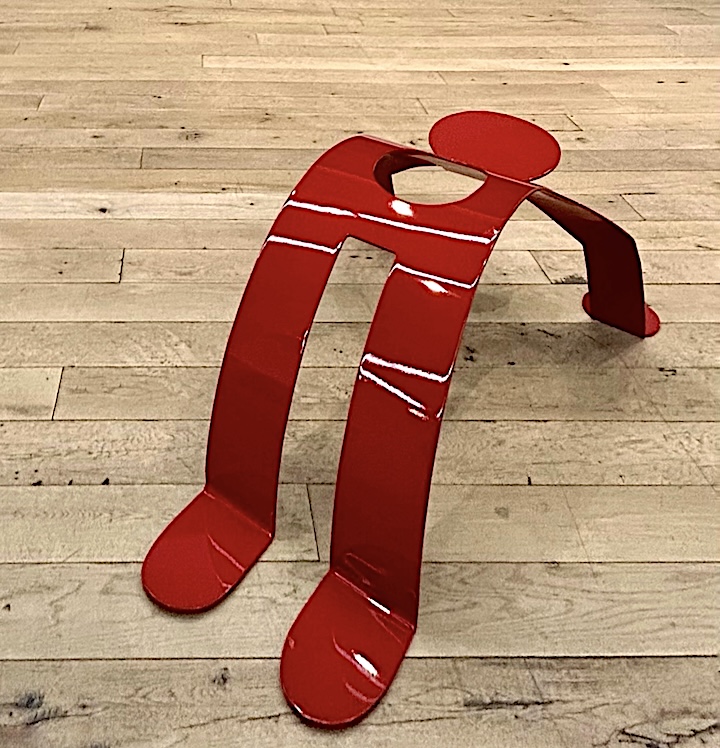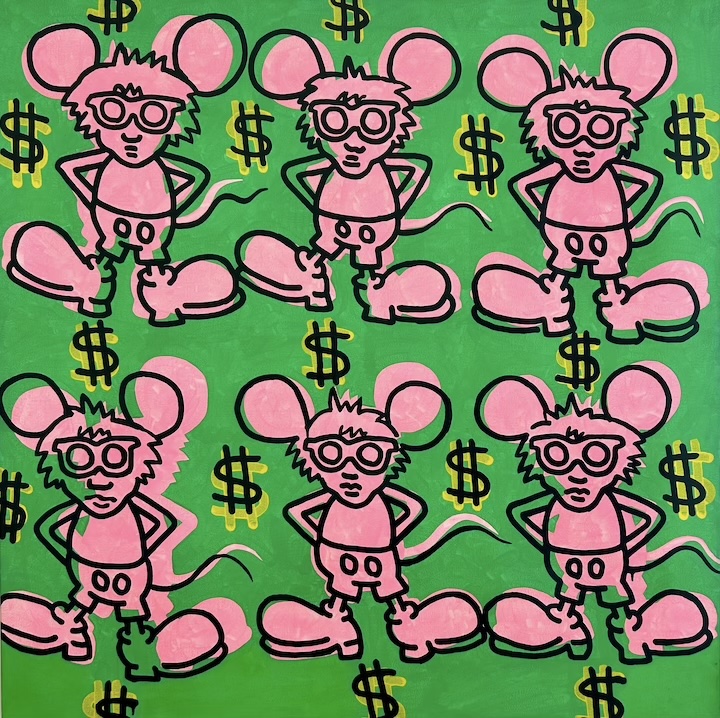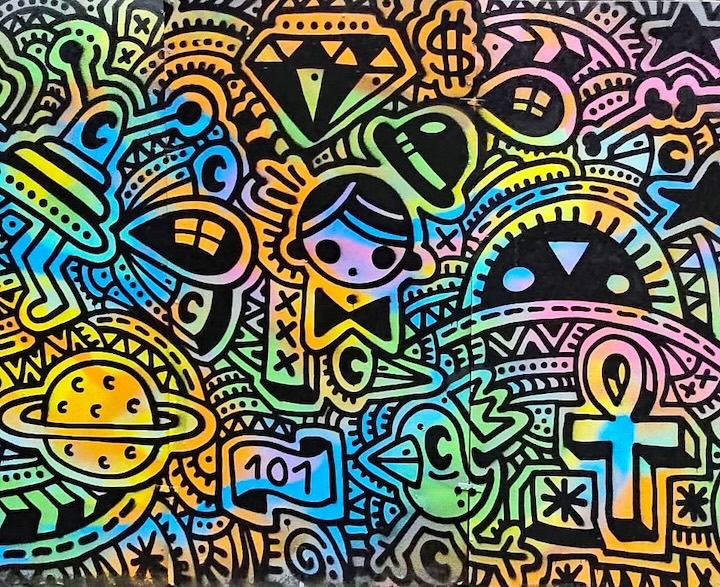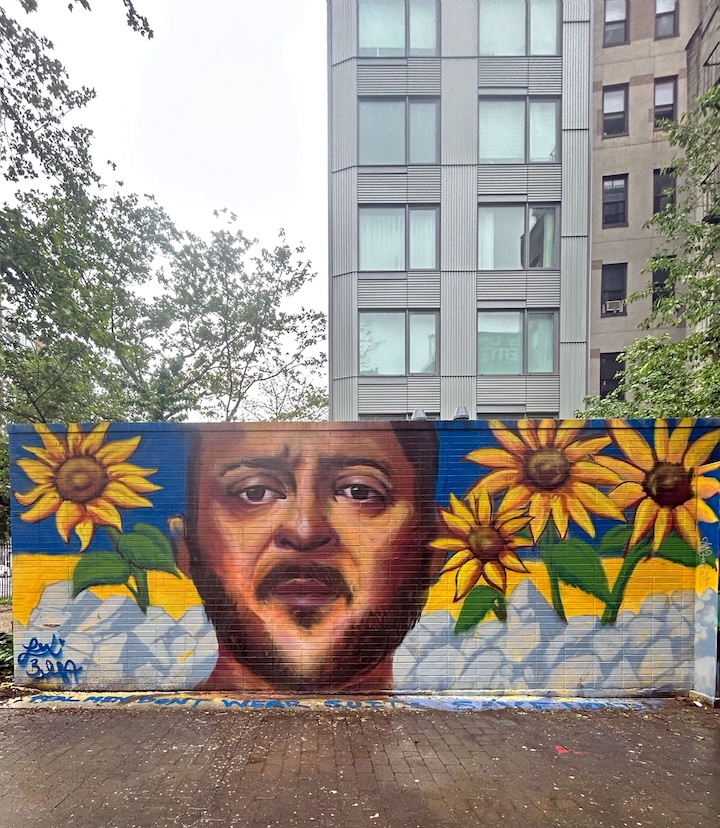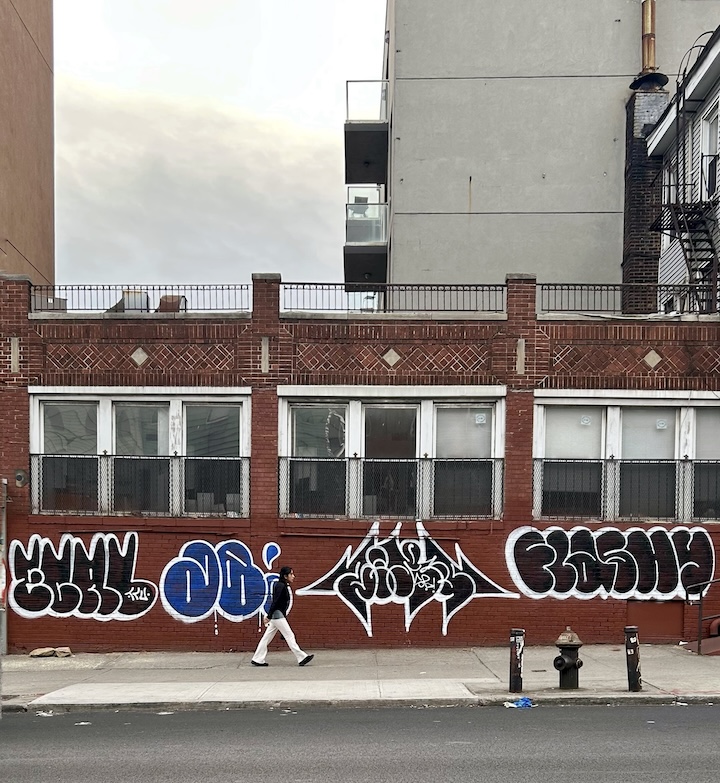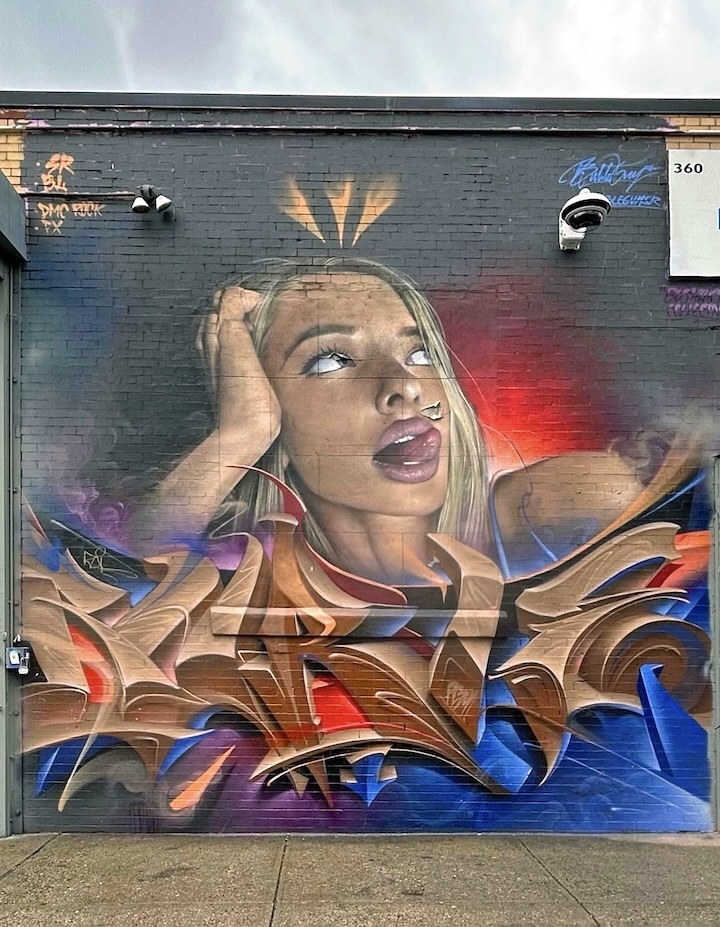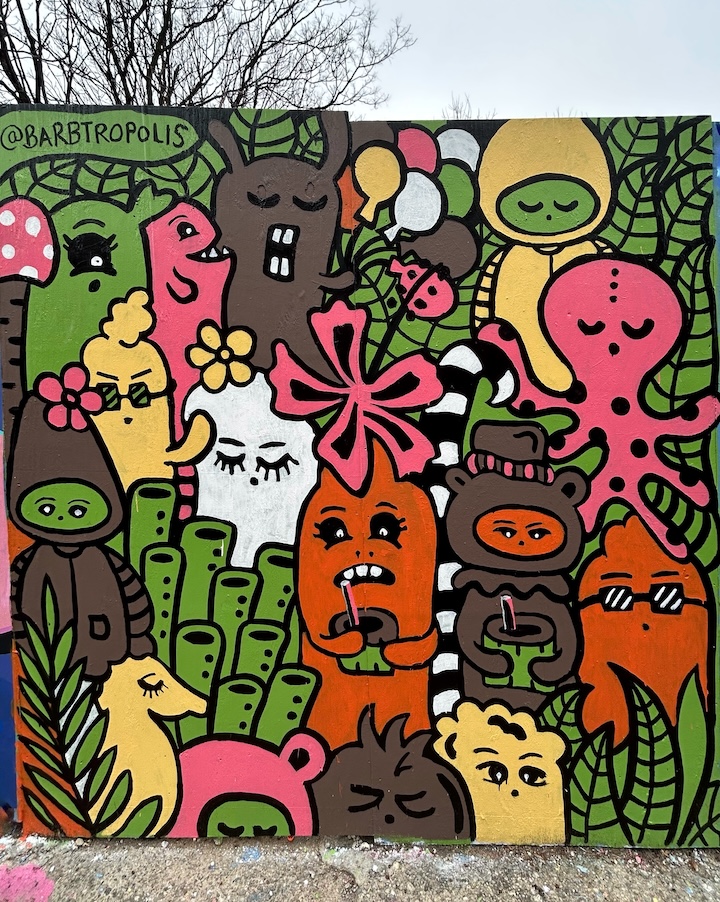
On my recent visit to Newark, arts educator and photographer Rachel Fawn Alban introduced me to The Golden Life, a joyous, brilliantly crafted mural project adjacent to the city’s Broad Street Station. Eager to find out more about this transformative venture, I posed a few questions to Rachel, who created this richly radiant mural project in collaboration with Newark-based artist Armisey Smith.
This mural project is such a rich addition to Newark’s visual landscape. Whose concept was it?
The Golden Life is a collaboration between Armisey Smith and me. Armisey is a talented artist and close friend who believed in me long before I believed in myself. She encouraged me to partner with her, and together we set out to create something special and meaningful for Newark.
We chose to honor real community members—not famous or historical figures—which made the project deeply personal. The mural features large-scale portraits of 14 women and girls who live or work near the intersection, celebrating the diversity and creativity of Newark women and girls. The portraits are connected by vibrant lines and color, symbolizing community, connection, and sisterhood.

Can you tell us something about its process?
Creating this mural was both challenging and rewarding. In April 2023, Armisey and I hosted a free art workshop at the Newark Public Library for women and girls of all ages. We presented the project, took portraits, and led participants through creative exercises including a selfie station, collage-making, and haiku writing—all centered around the theme of The Golden Life.
One of my favorite aspects of the project is the audio component. While we couldn’t feature everyone’s portrait on the wall, we were able to present all of their poems—so even more voices were included. The recordings are accessible via the Bloomberg Connects app, along with a beautiful introduction by Newark artist Kween Moore. It’s a way for people to experience The Golden Life beyond the visual—listening while walking around the site adds another layer of engagement and accessibility.

What were some of the particular challenges involved in seeing this project through?
There were quite a few! It took about six months of planning before the workshop, then about a year from the time of the workshop to the ribbon cutting. Scheduling was a challenge since we are all educators and artists juggling multiple projects. And, since the project spanned multiple seasons, weather impacted our fabrication and installation timeline.
This was a complicated project with many stakeholders and technical processes. In fact, just before we were set to begin, two of our original walls became unavailable. This required a complete redesign and budget revision, which pushed us back several months. Thankfully, our amazing project manager, Rebecca Jampol, and our partners helped us stay on track. In the end, it all came together beautifully.

How has the community responded to it?
The response has been overwhelmingly positive. People have shared how they love seeing it every day and how meaningful it is to see their stories reflected in public art. In a diverse, majority-Black city like Newark, it’s especially powerful to create space for women and girls of color—who are often underrepresented in public art and media — to be honored and celebrated. The project also beautified a neglected and dilapidated intersection at Broad Street Station—used by hundreds of residents and commuters every day—transforming it into a welcoming and inspiring space. It’s a powerful reminder of how art can profoundly alter one’s environment and strengthen community.

What’s ahead for you?
I’m excited to continue creating art that celebrates diversity and brings people together. As a Jewish woman in Newark, I’ve been reflecting on the Black-Jewish alliance in America—a historic and ongoing partnership rooted in shared struggles and a commitment to justice. I’m eager to work on future projects that explore and honor these intersections, amplifying stories that haven’t always been told.
I’m also thrilled to keep collaborating with Armisey. Working together on this mural was incredibly rewarding, and we’re already brainstorming future projects. I’m confident that whatever we do next will be just as meaningful.

And before we wrap up, I want to thank the key supporters who made this project possible: Project for Empty Space for organizing and managing the initiative; the City of Newark’s Department of Arts and Culture; and Bloomberg Philanthropies for their incredible support. I’m also deeply grateful to our team of local artists who helped facilitate the workshop, fabricate, and install the mural—and of course, to all the participants who brought their creativity, stories, and spirit to the work. Golden Life for Life!
Interview and photos 1-5 by Lois Stavsky
Featuring Newark community members:
- Reine Campbell and Quincy Campbell
- Antoinette Ellis Williams, Rachel Fawn Alban & Tamia Thomas
- Denise Toney
- Klymora Smith
- Adele Rae Hayes Harris
Photo 6 © Charles David, featuring Armisey Smith, Rachel Fawn Alban and members of the Newark community


